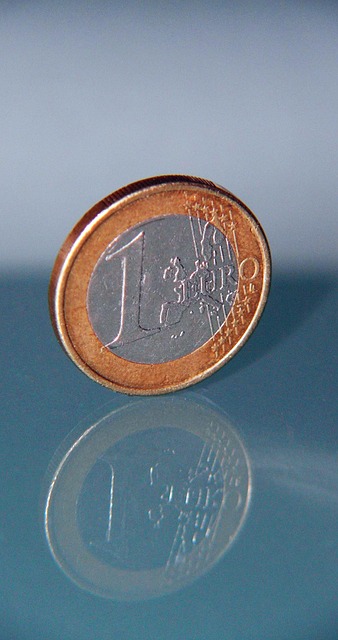The Power of Compounding: Why Time is Your Best Investment
Investing is often portrayed as a complex endeavor reserved for the financially savvy. However, the true essence of investing lies in a simple yet powerful concept: compounding. Compounding is not just a financial tool; it’s a strategy that has the potential to transform your financial future, regardless of your current wealth or experience level. This article explores the power of compounding, why time is your best investment, and how you can harness this potential in your financial journey.
Understanding Compounding
At its core, compounding refers to the process where the value of an investment grows exponentially over time due to the accumulation of interest on both the initial principal and the interest that has been added to it. Unlike simple interest, which only earns interest on the original principal, compound interest enables your money to generate more money, creating a snowball effect.
To put it simply, when you invest and earn interest, that interest is added to your initial investment, creating a new base on which further interest can be earned. Over time, this can lead to substantial growth in your investment portfolio.
The Mathematical Magic of Compounding
The formula for compound interest is essential to grasping the full power of compounding. The formula is as follows:
A = P (1 + r/n)^(nt)
Where:
- A = the amount of money accumulated after n years, including interest.
- P = the principal amount (the initial investment).
- r = the annual interest rate (in decimal).
- n = the number of times that interest is compounded per unit t.
- t = the time the money is invested for, in years.
This formula underscores the importance of three critical factors in leveraging compounding: principal amount, interest rate, and time. A slight increase in any of these elements can lead to a dramatic increase in the total amount accumulated.
The Role of Time in Compounding
Time is perhaps the most crucial element in the compounding equation. The longer you allow your investments to grow, the more pronounced the effects of compounding become. This is due to two primary factors: the exponential growth of returns and the ability to ride out market fluctuations.
Consider this: If you invest $10,000 at an annual interest rate of 5%, your investment will grow to $16,288 in 10 years. However, if you give it 30 years, it will swell to an impressive $43,219. This illustrates the undeniable impact of time on the power of compounding. The longer your money remains invested, the less you might worry about short-term market volatility, as, in the long run, markets tend to increase in value.
The Example of a Real-Life Investor
To ground our discussion in reality, let’s look at the investment journey of a hypothetical investor named Sarah. Sarah decides to invest $5,000 every year starting at the age of 25, and she plans to retire at 65. She anticipates an average annual return of 7% on her investments.
As Sarah continues to invest $5,000 yearly, the first $5,000 she contributes will have 40 years to grow, while her last contribution will only have one year. By the time Sarah turns 65, her investments will have grown to approximately $1,244,000. The majority of this amount will come not just from her contributions but from the accumulated interest on those contributions.
In contrast, if Sarah decided to wait 10 years, starting to invest at 35 instead of 25, her total accumulation at the age of 65 would drop to roughly $658,000. This example emphasizes that the earlier you start investing, the more you benefit from the effects of compounding.
The Dangers of Delay: A Cautionary Note
While it’s clear that the power of compounding presents immense opportunities, it can also be a double-edged sword. The longer you wait to invest, the less time your money has to grow. Many people underestimate how significant this delay can be in their financial trajectory.
Consider the story of John, who puts off investing until he turns 40, believing he can “catch up” later. If he invests $10,000 annually from 40 to 65, at a 7% return, he will end up with about $750,000. However, if he had started at 25, he would have accumulated nearly $2.5 million by the time he turned 65! This stark difference highlights how time can work against you if you choose to delay your investments.
Compounding Beyond Interest: Reinvesting Dividends
Compounding isn’t limited to just interest; it also applies to dividends and capital gains. Reinvesting dividends can significantly enhance your compounding growth. Companies that pay dividends often allow investors to reinvest their dividends automatically to purchase additional shares. This can lead to more shares generating dividends in the future, which results in an accelerating growth cycle.
For example, if you own shares of a company that pays a 2% dividend, instead of cashing out your dividends, reinvesting them can compound your returns. Over time, this can lead to vastly larger financial returns compared to simply taking the cash each quarter.
Practical Steps to Harness the Power of Compounding
While understanding compounding is essential, taking action is equally important. Here are several practical steps to help you harness the power of compounding:
- Start Early: The sooner you start investing, the more time your money has to take advantage of compound growth.
- Invest Regularly: Make investments a habit, whether it’s monthly or annually. Regular contributions can provide a steady stream of growth.
- Choose the Right Investments: Consider investments that have the potential for compounding returns such as stocks, mutual funds, or ETFs.
- Reinvest Earnings: Whether it’s dividends or interest, reinvest your earnings to take full advantage of compounding.
- Stay Patient: Compounding works best over the long term. Resist the urge to pull your money out during market downturns.
Conclusion: Your Financial Future Awaits
The concept of compounding is a simple yet powerful investment principle that can significantly impact your financial future. By understanding how time-equals opportunity in the world of investing, you can make informed decisions that leverage this principle to its fullest potential. Remember that the key to successful investing is not just how much you invest, but also how long you allow your money to grow.
By committing to an investment strategy that prioritizes time and compounding, you can unlock the incredible potential of your financial resources. As the saying goes, “Time is money,” and in the world of investing, time is the best friend you can have. Start today, and let the power of compounding work for you!



